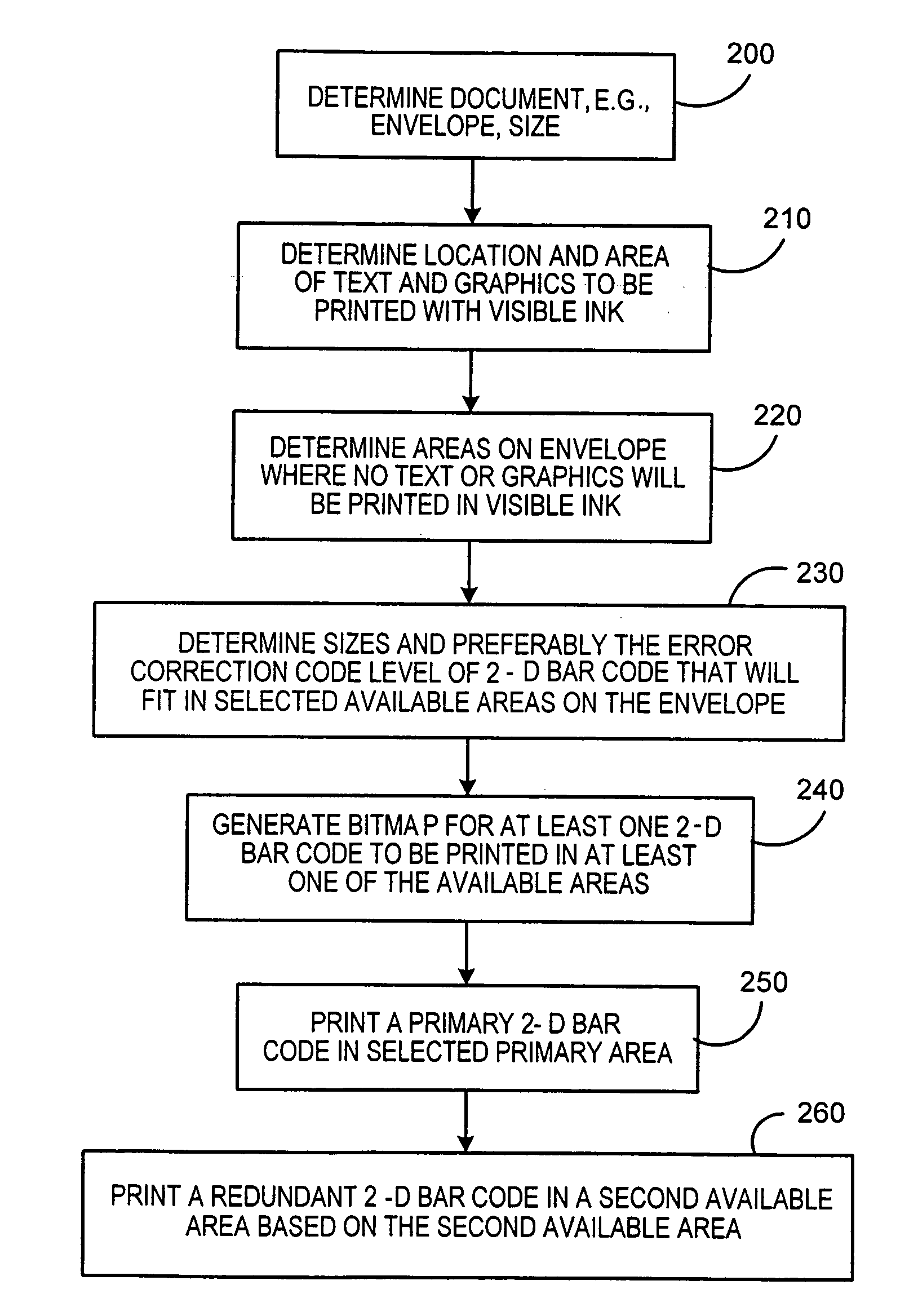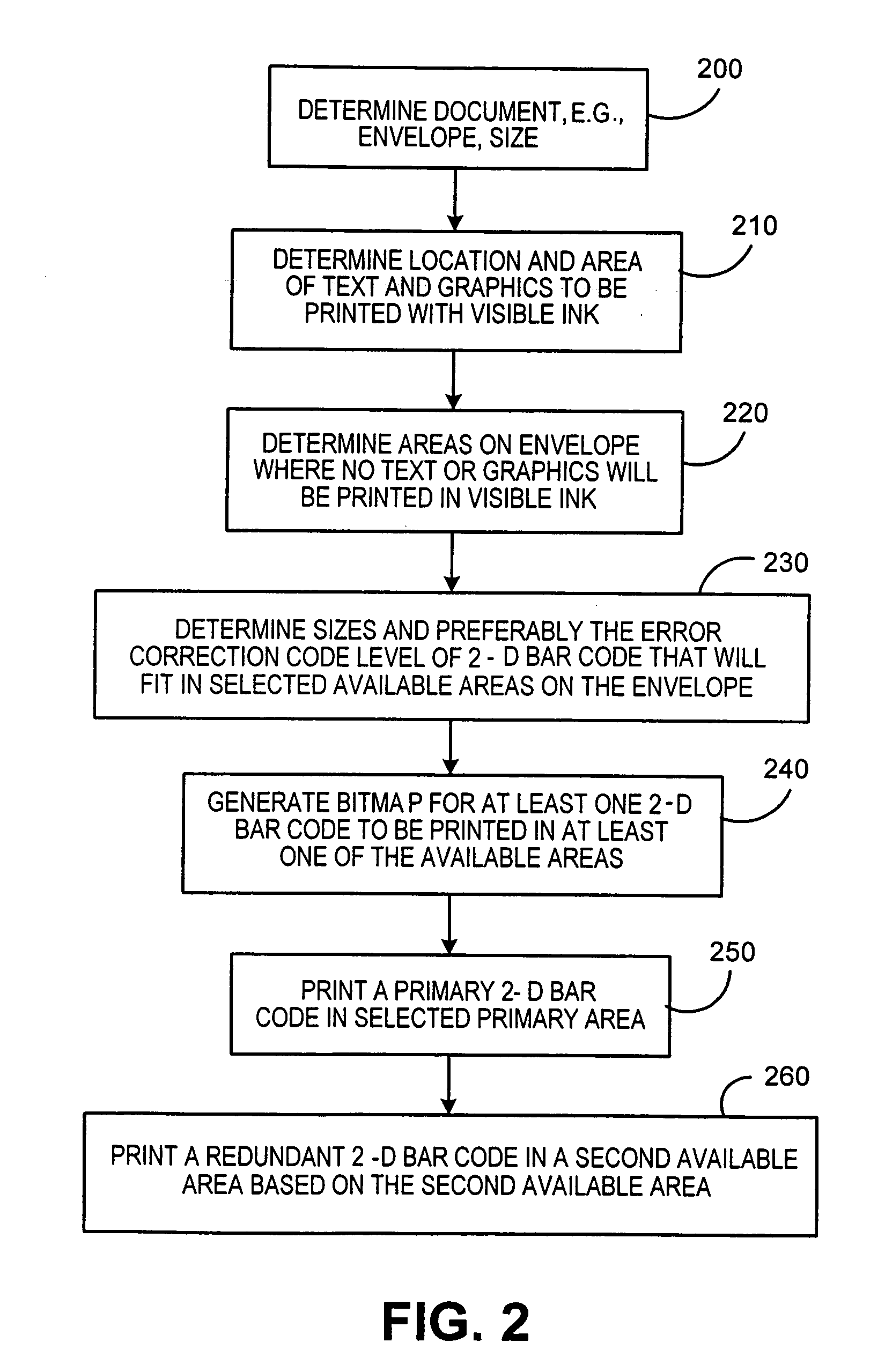Method for improving the readability of composite images
a composite image and readability technology, applied in the field of printing composite images, can solve the problems of reducing reliability, obscuring printed information, and insufficient capability, and achieve the effect of high information density and highly reliable form
- Summary
- Abstract
- Description
- Claims
- Application Information
AI Technical Summary
Benefits of technology
Problems solved by technology
Method used
Image
Examples
Embodiment Construction
[0021] The invention relates to printing composite images that can contain large amounts of information on mailpieces, such as mailpiece 10 illustrated in FIG. 1, which employs exemplary IBI images comprising human readable information and two-dimensional (2-D) bar code information. The composite images, as will be explained in detail below, preferably include redundant information.
[0022] Referring to FIG. 1, there is shown a schematic drawing illustrating a layout of a mailpiece 10 including a 2-D bar codes 12 and 12a, which can be printed in invisible or light colored luminescent ink, along with conventionally printed addresses 14, 16 and postage information 18 and optional advertising information 19 and a Facing Identification Mark (FIM) 20, which are typically printed in black ink. The preferred embodiment of the present invention is described herein for use in printing authentication bar codes on mailpieces. It will be understood that the invention can also be used to print in...
PUM
 Login to View More
Login to View More Abstract
Description
Claims
Application Information
 Login to View More
Login to View More - R&D
- Intellectual Property
- Life Sciences
- Materials
- Tech Scout
- Unparalleled Data Quality
- Higher Quality Content
- 60% Fewer Hallucinations
Browse by: Latest US Patents, China's latest patents, Technical Efficacy Thesaurus, Application Domain, Technology Topic, Popular Technical Reports.
© 2025 PatSnap. All rights reserved.Legal|Privacy policy|Modern Slavery Act Transparency Statement|Sitemap|About US| Contact US: help@patsnap.com



